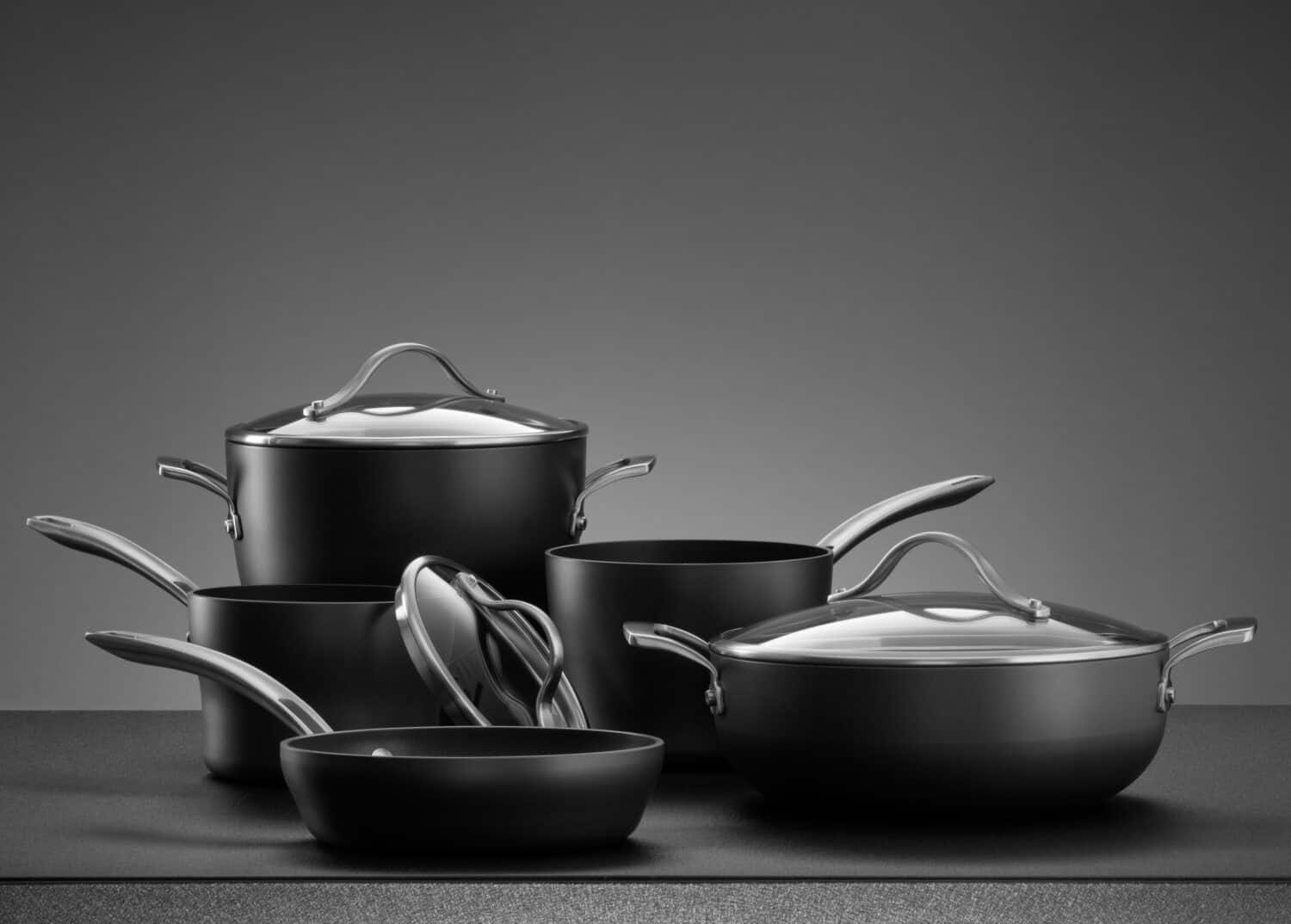

Saucepan vs. Pot: 3 Differences for Cooking & When to Use Each
When it comes to cookware there are legitimately so many kinds to pick from and know about. Take the saucepan vs. pot dilemma, are they really that different? Can’t you heat up soup in a saucepan and simmer sauce in a pot? While there are all kinds of shapes and sizes of both saucepans and pots, the two differ in shape, pots are generally bigger, and saucepans have one long handle, while pots have two short ones on the side for transporting. These differences impact how each cookware option can be used for particular recipes and in particular ways.
To learn more about the best instances to use a saucepan vs. pot, keep on reading. We’ll discuss the different varieties of cookware, and learn more about their differences. Get some recipe ideas, and a general rundown on saucepan vs. pot information. Never again will you have doubts about which one to use when planning your next mealtime.
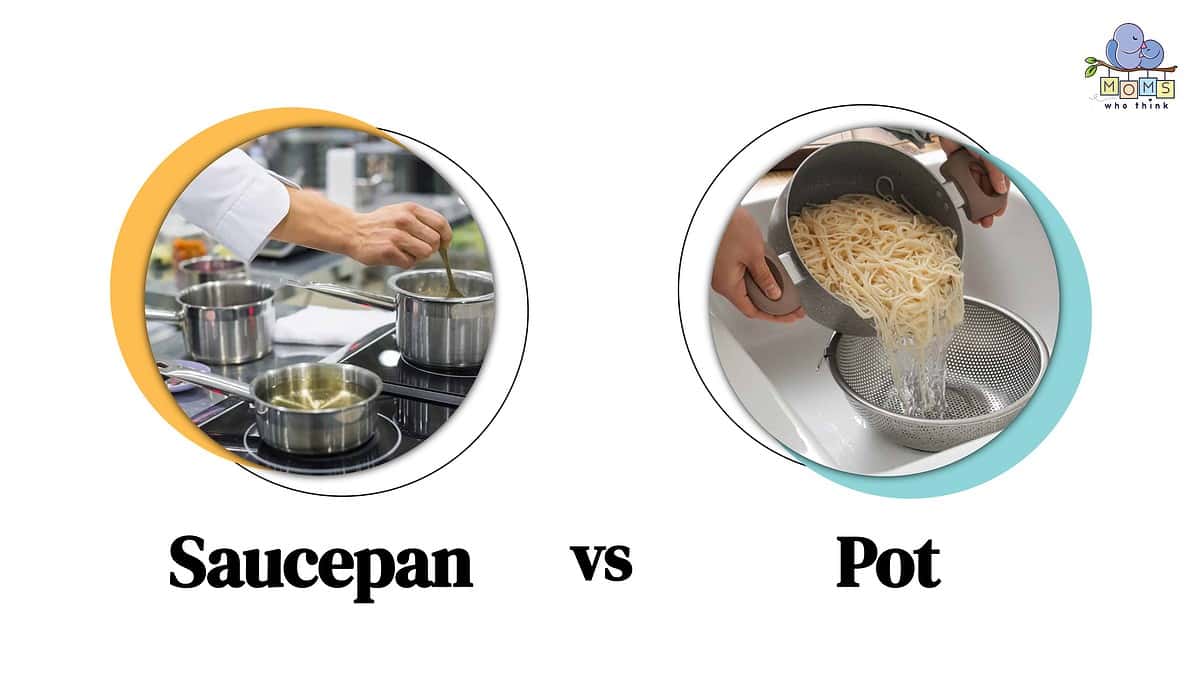
Saucepan vs. Pot: What Is The Difference?
Saucepans and pots can be compared in terms of their size differences, handle differences, shape differences, and the ways in which they are used. While saucepans have shorter sides and one longer handle for maneuvering, pots are usually bigger than saucepans with tall sides so that more water can be used. Pots have handles on the side to better support a larger volume of water and therefore weight. Saucepans and pots are made from similar materials. These include stainless steel, aluminum, ceramic, and copper. There is also enamel cookware which is popular for its non-stick properties (via MadeInCookware).
What Is A Saucepan?
A saucepan is a type of cookware with a circular base, short sides, and a long handle for gripping and moving, as needed. Use your saucepan for simmering sauces, poaching eggs, cooking small amounts of vegetables, or heating up liquids. Because it can have less water than a pot, saucepans are better for quick cooking, sauce making, or reheating things. But what exactly can you make?
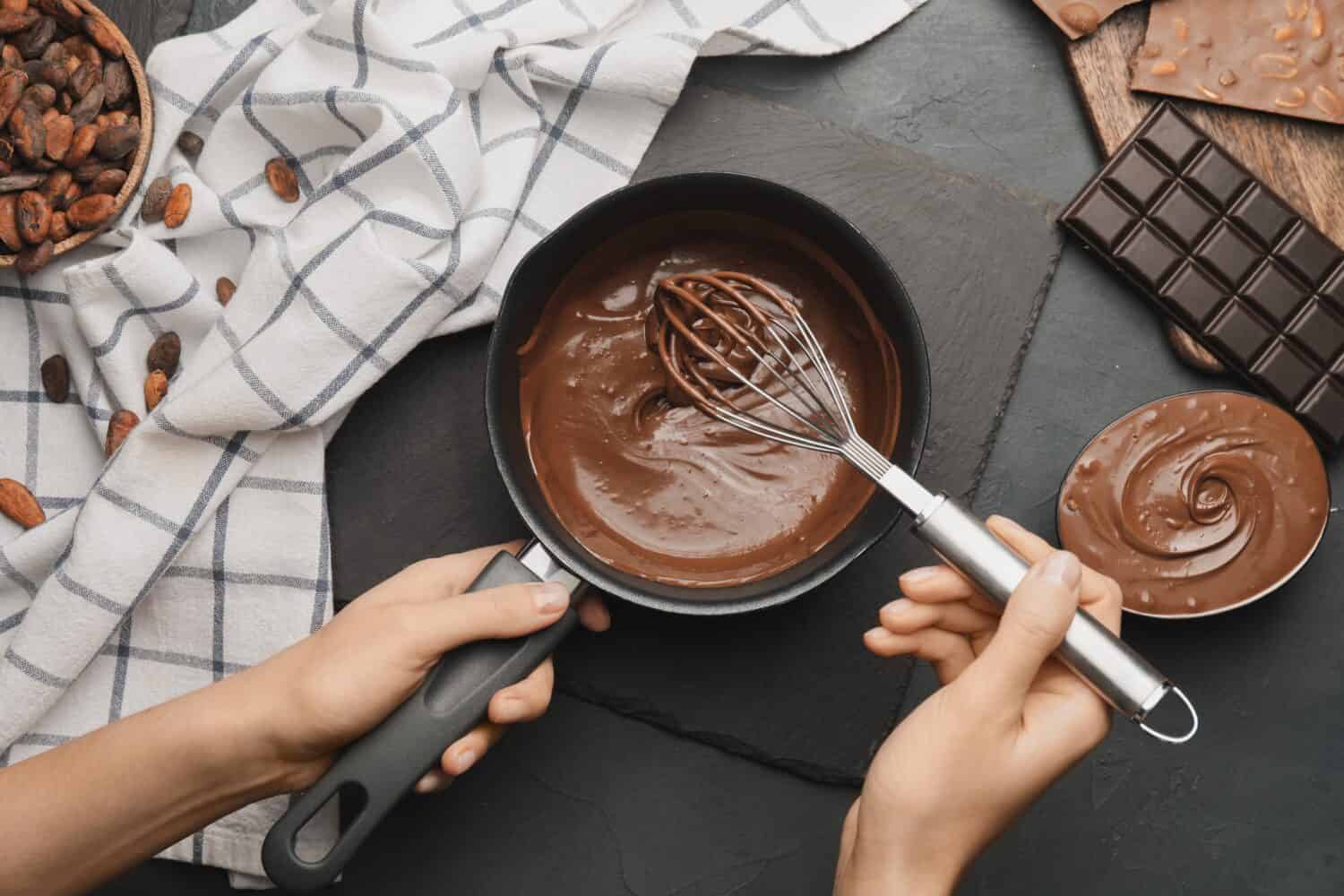
©Pixel-Shot/Shutterstock.com
How To Cook With Saucepans
Saucepans are an integral tool for certain sauces and easy-to-make dishes. Whether you're looking to simmer, cook, reheat, poach, or get creative to your heart's delight. Here are some ideas:
Popular Recipes Using Saucepans
Check out other saucepan recipe ideas from one of the top manufacturers of cookware, Le Creuset.
The Evolution Of Cookware
Before we get into the elaborate details of more cookware, let's learn about how pots, pans, saucepans, and the works evolved over the years. According to NPR, the earliest cookware was used to make things like fish soup. Some 20,000 years ago, before farming was even an organized affair, there was evidence of ceramic cookware being made in areas of China and Japan. They used these original iterations of saucepans and pots to cook meat, typically from the sea.
From clay cookware, humans worked to find ways to boil water over hot springs. They'd use turtle shells bamboo tubes, or carved stone bowls that could be cooked right in the hearth of a fire. Native Americans used cooking baskets of clay that would hold gourds filled with water over wood coals, the heat would fire the clay, boiling the water and hardening the basket into its own waterproof roasting pan.
The evolution of cookware continued as pottery developed, people created glazes that could waterproof and heatproof a pot. These methods were soon replaced by heartier materials. Metalworking revolutionized cast-iron and bronze cookware, think of cauldrons in Medevil times! Western kitchens in the 17th century usually had a few pots and skillets, and the settlers of the new colonies in America brought their blacksmiths to create whole sets of pots and pans. Modern day, we have all kinds of cookware with sizes that fit the needs of the kitchen and materials that allow for efficient, creative cooking (via New World Encyclopedia).
What Is A Pot?
And onto more modern-day cookware, a pot is a larger version of a saucepan, with the same circular base. The sides are taller which allows for a higher volume of water for cooking, broiling, boiling, stewing, etc. Pots also have small handles on each side to allow for a more balanced way to transport more weight. The common types of pots include stockpots, which are often used for stocks, stews, and broths, and Dutch ovens, which is made from cast iron or enamel and are great for making breads and slow cooking. There is also a double boiler pot, that combines two pots, one over the other, for an indirect heat that can be used for making large quantities of sauces without burning them (via ABT).
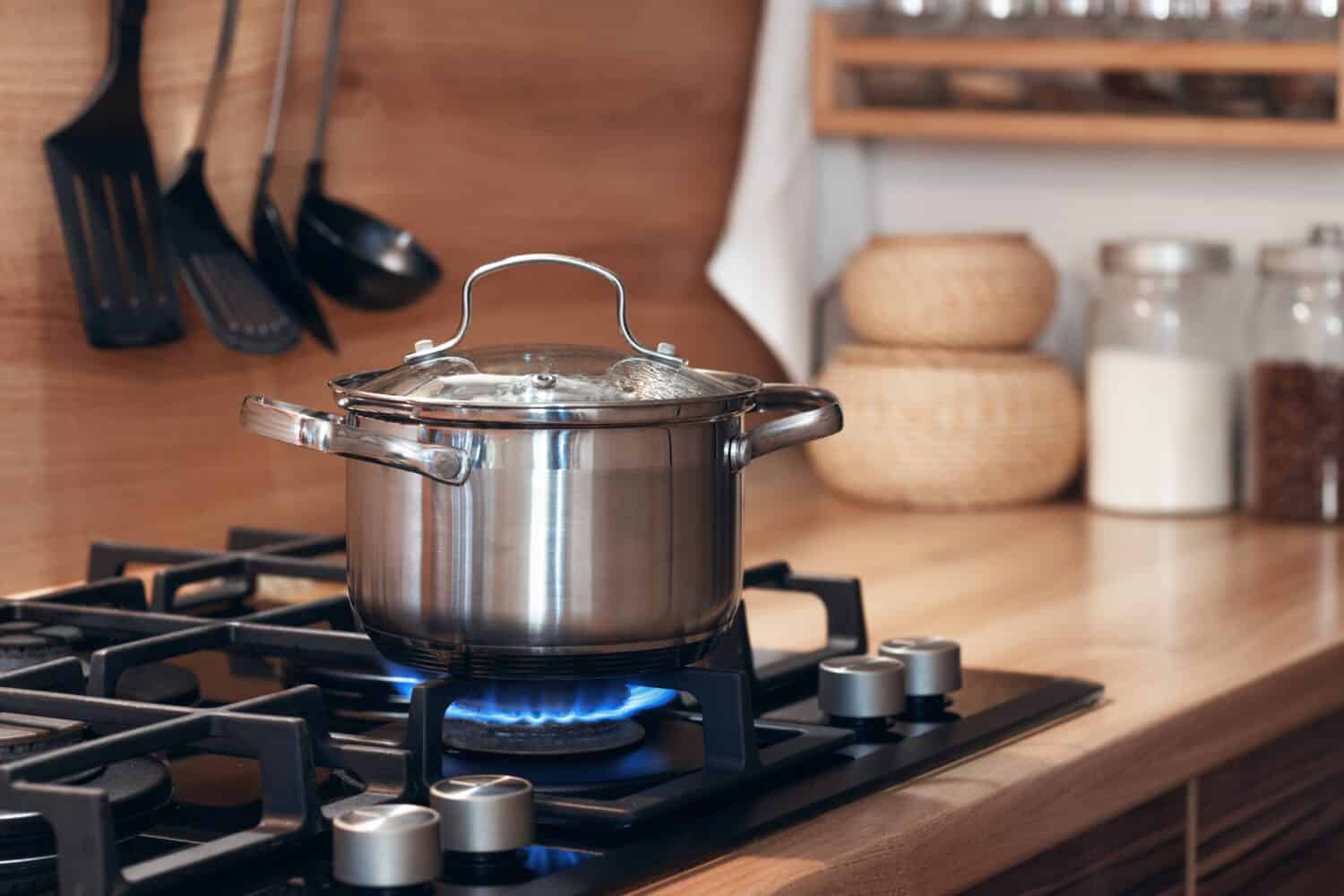
©Leka Sergeeva/Shutterstock.com
How To Cook With A Pot
Due to their larger size, pots can be great for braising (tenderizing ingredinets), creating large quantities of broths and stock, and slow-cooking meats and vegetables. Because they can hold so much water, they can cook larger items like lobster, or multi-ingredient stews. Let's check out some recipe ideas:
Popular Recipes Using Pots
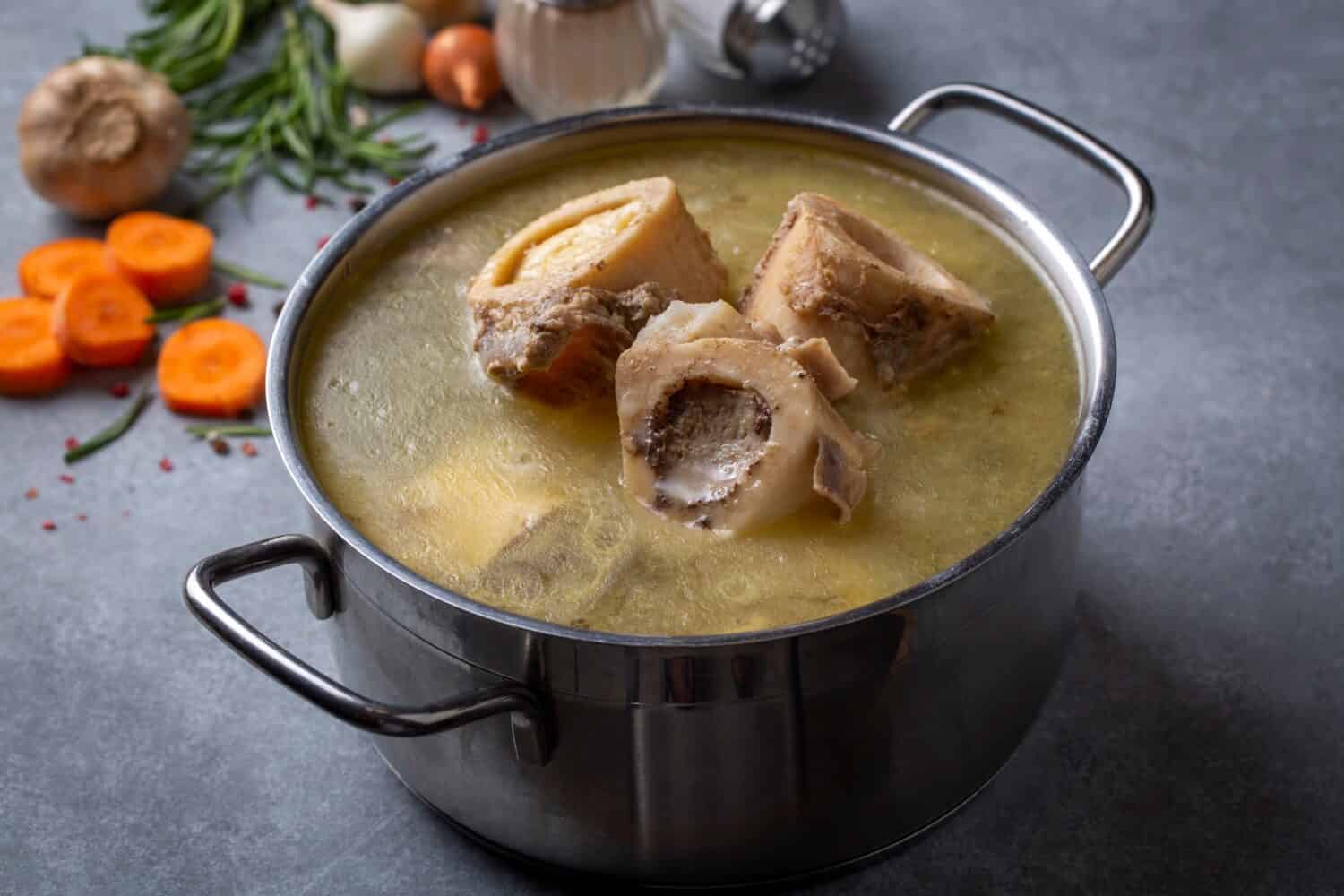
©Esin Deniz/Shutterstock.com
Saucepan vs. Pot: Are They The Same Thing?
Though they're both cookware, saucepans and pots are not the same thing. Saucepans are smaller, with one handle. Pots are larger with two handles that make them easier to carry due to their weight. The size of the pot traps moisture which makes it great for slower-cooked stews, broths, and stocks. If you were to try and make a small amount of sauce at the bottom of a large pan, there's a chance it would simply burn. Saucepans are better for fast and easy cooking over higher heat.
Possible Alternatives To Saucepan And/Or Pot
There are so many kinds of cookware. If you're looking for alternatives to a saucepan or a pot, try out some new recipes on a skillet/frying pan, sauté pan, or griddle pan. There are also wok pans, with sloping sides great for heat control, pressure cookers, and roasting pans. And of course, all kinds of cookware vary on the type of material they're made from. You can find most of these in materials like aluminum, bare and enameled cast-iron, porcelain, stainless steel, carbon steel, bronze, copper, and non-stick.
Bonus Cleaning Tips For Cookware
Because there are so many kinds of cookware, made from so many different materials, it's important to know how to properly clean them. For scorching on stainless steel pans, use heat and scrubbing to help the black marks go away. You can put water in the pan and boil it for 5-7 minutes before scrubbing over a sink, this will help the stain to lessen. If you're not using enamel and have food stuck to the base of your cookware, you can soak certain types of cookware in hot water overnight to loosen and eventually clean the base of your pot/pan/saucepan, etc. When working with cast iron, you should never scrub it with an abrasive sponge or cleaning tool. Cast irons have a beautiful oil-treated coating that will be marred by too much friction. Use hot water and reoil with some vegetable or other neutral oil when the pan/pot is dry. Copper cookware will oxidize with too much water and regular dish soap. You can treat copper with hot water and vinegar to clean it without damaging the color or usability of the pan (via Blue Apron).